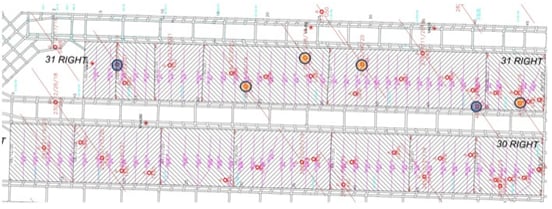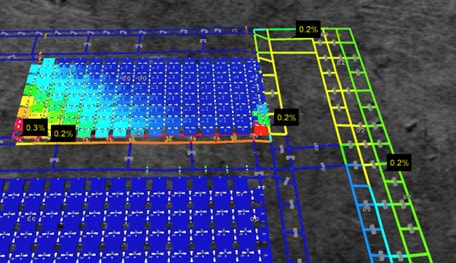Mining Project: Investigation of Methane Control and Ventilation Effectiveness in Gassy Longwall Mines
| Principal Investigator |
|
|---|---|
| Start Date | 10/1/2023 |
| Objective |
Gassy longwall emissions create a substantial challenge for ventilation systems to maintain a safe underground work environment and are reliant on methane control systems to remove quantities of coalbed methane (CBM) before it enters the mine environment. There is no singular approach in gas management that will address the gas mitigation and emission challenges in these gassy longwall mines. Effective methane drainage technology is a necessity for the safety of the entire workforce at each of these gassy U.S. longwall operations, since ventilation alone cannot dilute methane emission levels below statutory limits. To conduct research in this area, expertise is required in underground evaluations using empirical methods alongside numerical modeling and field instrumentation and analysis to solve issues associated with methane extraction interactions with underground mining. This pilot project research will provide quantitative data on the performance of an operator’s existing methane control system, any changes occurring in the gas in place near the mine, and an assessment of mine’s ventilation system and adherence to design parameters. NIOSH will provide scientifically validated models and measures to enhance the underperforming methane control ventilation systems for gas management. |
| Topic Areas |
Research Summary
Approach
A systems approach has been configured for this research which will evaluate existing methane control and ventilation systems in use at the collaborator sites. At least two gassy longwall sites will be investigated in this study. An assessment will be made of the applied methane drainage methods, and gas concentrations in ventilation air will be reviewed. The propagation of hydro fracks will be reviewed and gas content data will be evaluated. Any apparent implementation problems for methane control methods will be identified.
An analysis will be made of variations in the quantity of stored gas and any possible relationships to stratigraphic and geologic controls. The presence of changes in coal properties will be reviewed, and potential influences of geologic controls on gas in place will be summarized. Experimental test data will be evaluated including the need for new testing to understand the quantity of gas in place and the identification of changes in the gas transport network.
A review of in-house network models characterizing the ventilation system will be implemented for current and projected longwall panels. An evaluation of all ventilation data from contractors and operators will be made. The need for new ventilation input will be assessed. A comparison of new and prior research findings for characterizations of air and gas flow patterns on longwall faces will be done, providing the framework for scientific findings and input to the collaborating mines.
Milestones and Accomplishments
| Description | Audience | Year |
|---|---|---|
| Conduct preliminary evaluation of existing methane control methods | Industry partners, mine operators, research community | 2024 |
| Conduct preliminary assessment of in-place gas changes | Industry partners, mine operators, research community | 2024 |
| Conduct preliminary assessment of cooperators’ longwall and face ventilation | Industry partners, mine operators, research community | 2024 |
Planned Impacts and Outcomes
This project research will address safety concerns for mine workers due to the presence of excessive quantities and concentrations of mine gases produced by methane emissions. The outcomes are anticipated to be related to the research approach, producing a system-based evaluation of the coopering mines’ methane control effectiveness in managing high gas emission rates and any changes in in-place gas quantities occurring at these sites. The ultimate outcome will incorporate ventilation components for an overall view of variables affecting underground gas concentrations and how the mine operator can improve the management of in-place and emitted gases. Improved performance of methane control systems and ventilation designs through adaptations of research findings is the primary anticipated impact of this research.
Outputs
Two conference papers are anticipated from this project for fiscal year 2024. Two possible conference venues are the Society for Mining, Metallurgy & Exploration annual meeting or the North American Mine Ventilation conference in 2025, with paper submittals in 2024. It is expected that one output will be focused on project findings in methane control and another will be focused on what was learned from the ventilation research. Both papers are expected to address the longwall mining of coal, particularly in gassy seams. The methane control research will include content related to coalbed methane extraction from coal seams.
Supporting Visuals

Frack well locations on study panel are shown. Blue circles indicate sites where good completion parameters were achieved. Orange circles show sites of below-optimal frack well development, potentially limiting gas extraction.

Network modeling simulation of baseline methane inflow to the study panel of a mine and the resulting concentrations in ventilation air.